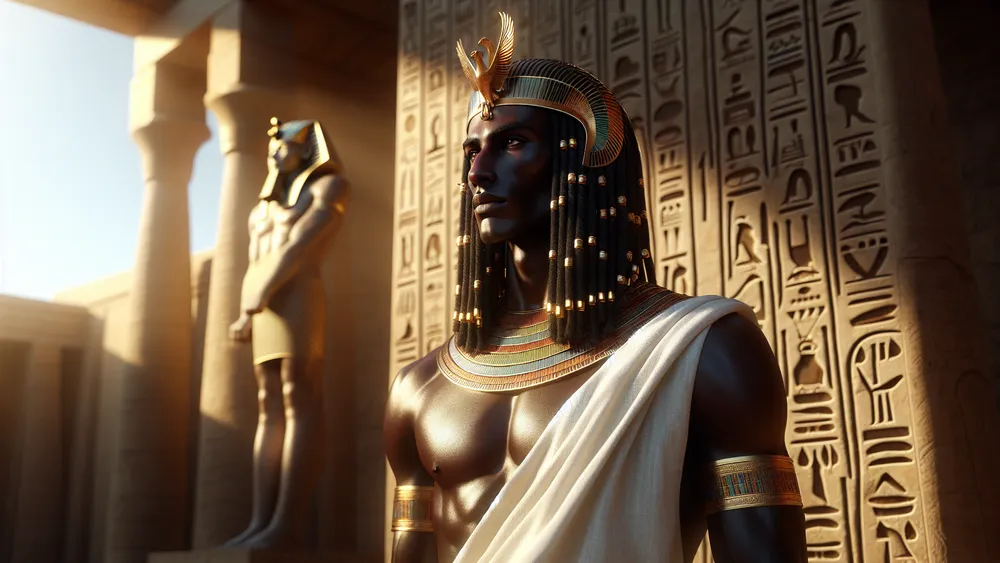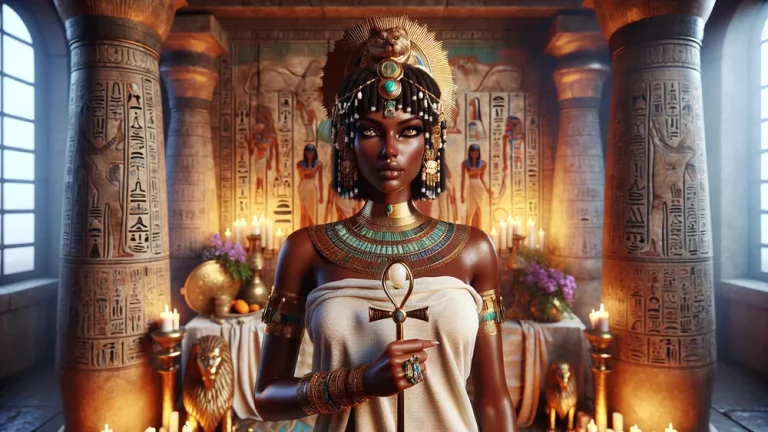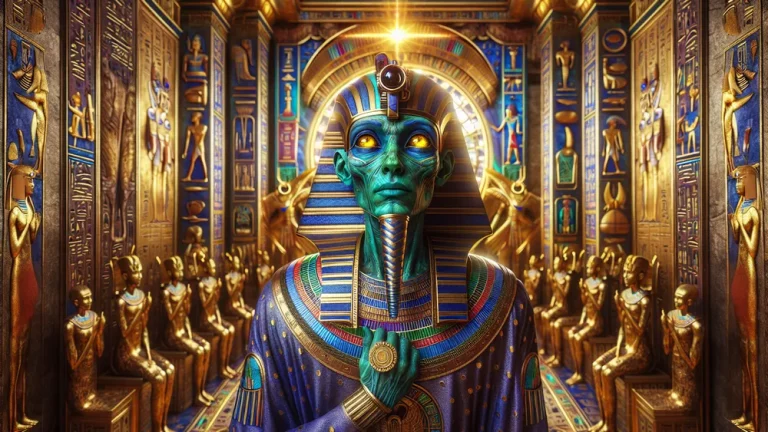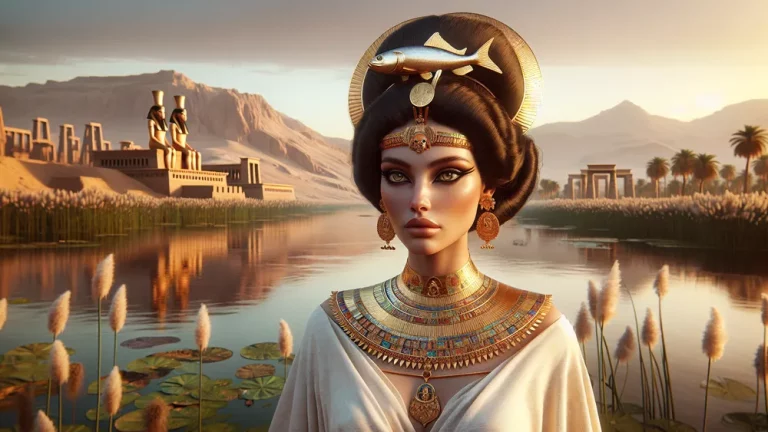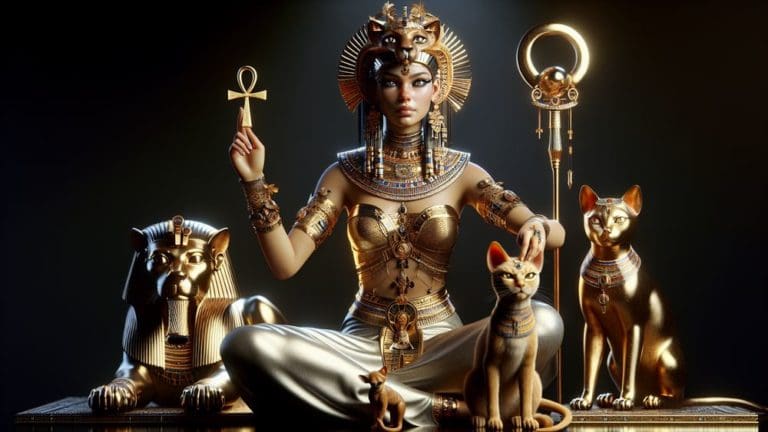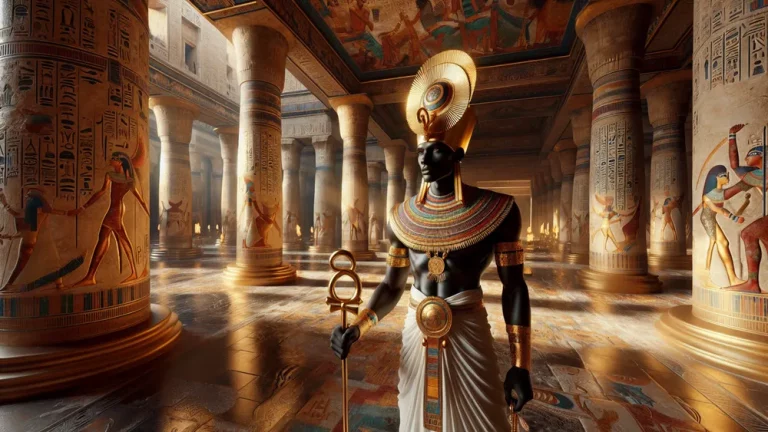Imhotep: Ancient Egyptian Architect and Deity Of Medicine
Imhotep is one of those fascinating figures from ancient Egypt who leaves you in awe. He’s not just any historical figure; he’s a genius who wears many hats. First off, he’s the brains behind the Step Pyramid of Djoser, which is a game-changer in architecture. This pyramid isn’t just a pile of stones; it’s a revolutionary structure that changes everything about how Egyptians build.
Key Points:
- Imhotep, an ancient Egyptian figure, excelled in architecture and medicine.
- He designed the groundbreaking Step Pyramid of Djoser, revolutionizing Egyptian architecture.
- Imhotep’s medical contributions earned him the title Father of Medicine.
- After his death, Imhotep was worshipped as a god of healing and wisdom.
- His architectural works influenced future builders and set new standards.
- Imhotep’s transition from mortal to deity is a unique aspect of his story.
- He appears in modern media, such as films and books, adding to his legacy.
But wait, there’s more! Imhotep also makes huge strides in medicine, earning him the nickname “Father of Medicine.” His work is so impactful that people start worshipping him as a god of healing and wisdom. In this blog post, we’re diving into his life story, his amazing works, and how he goes from being a man to a deity.
We’re also going to see how his influence stretches from ancient times all the way to today.
Early Life and Background
So, to get why Imhotep is such a big deal, we’ve got to peek into his early days. Let’s explore what shapes him and sets him on the path to greatness.
Imhotep’s Origins and Family
Imhotep possibly comes from Memphis, Egypt (an ancient city that’s a big deal back then). His family? Well, he might be the son of an architect named Kanofer (a guy possibly involved in some major building projects). When it comes to education, Imhotep possibly trains in the temple schools (places dedicated to both religious and academic learning). He possibly gets exposed to a mix of architecture, medicine, and possibly priesthood (roles that need a lot of knowledge and skill). This diverse background possibly sets him up for his amazing career. Here are some key points about his origins and family:
- Birthplace: possibly Memphis, Egypt.
- Family: possibly the son of an architect named Kanofer.
- Education: possibly trained in the temple schools.
- Influences: exposure to architecture, medicine, and possibly priesthood.
Imhotep may have been born in Memphis, Egypt, and potentially is the son of architect Kanofer while his education may have taken place in temple schools where he may have been exposed to various fields which may have influenced his remarkable career.
Architectural Achievements
Alright, so we’ve got a glimpse of his early life. Now, let’s jump into what really makes Imhotep famous. His architectural feats are truly something special.
The Step Pyramid of Djoser
The Step Pyramid of Djoser sits in Saqqara (an ancient burial ground). It’s the first of its kind with a six-tiered structure. This pyramid possibly marks a big shift, moving from the old mastaba (a flat-roofed, rectangular tomb) to something more complex. The design possibly sets a new standard, influencing how future pyramids get built. The cultural impact? Huge. It possibly establishes a new way of thinking about monumental architecture in ancient Egypt. Here are some key points about the Step Pyramid:
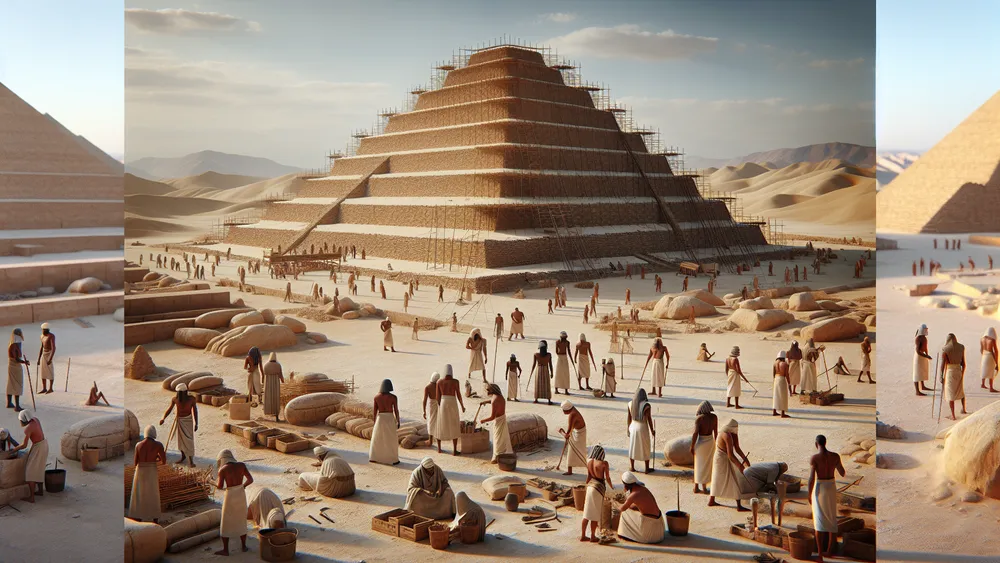
- Location: Saqqara.
- Structure: six-tiered pyramid, first of its kind.
- Innovation: transition from mastaba to pyramid.
- Cultural impact: set a precedent for future pyramid construction.
Other Architectural Contributions
Imhotep possibly works on other significant constructions, like temples and tombs (important structures in ancient Egypt). His methods and designs possibly influence future builders, possibly setting new standards in architectural practices. These contributions possibly go beyond the Step Pyramid, possibly showing his versatility and possibly leaving a lasting mark on Egyptian architecture. His work possibly serves as a foundation for later architectural advancements, possibly inspiring generations of builders.
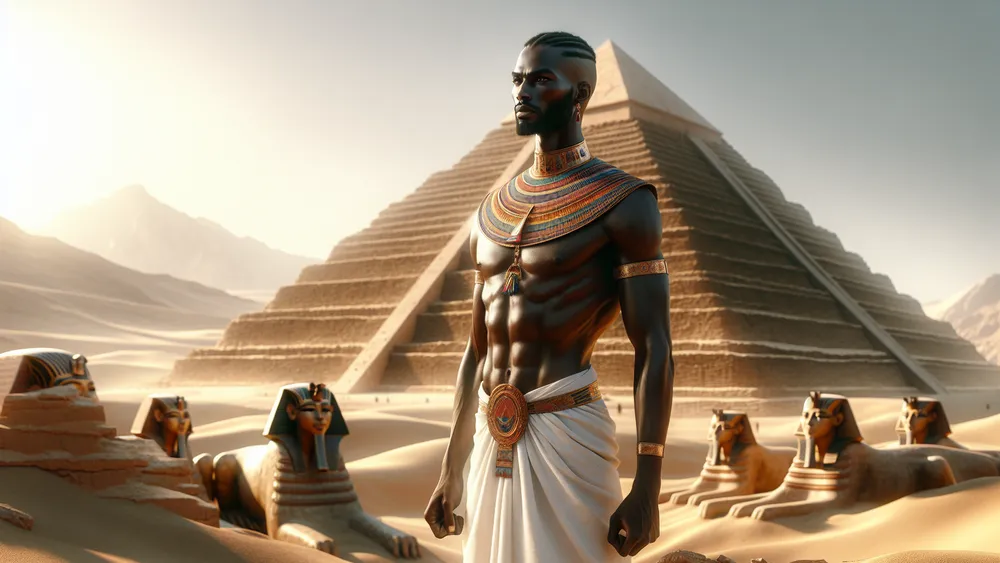
Imhotep’s work possibly influences future builders and sets new standards in architectural practices, which may have a long-lasting impact on Egyptian architecture.
Medical Contributions
Alright, let’s switch gears and explore another fascinating part of Imhotep’s life. Besides architecture, he possibly makes big strides in the field of medicine.
Imhotep as the Father of Medicine
Imhotep possibly makes huge contributions to medicine. He possibly writes medical treatises (early written works on medical knowledge). He possibly gets involved in early surgical techniques and treatments, possibly setting the stage for future medical practices. His legacy possibly goes way beyond his lifetime. People possibly venerate him as a god of medicine. This reverence possibly inspires later medical practitioners, possibly shaping their work and possibly influencing the field of medicine. Here are some key points about his contributions:
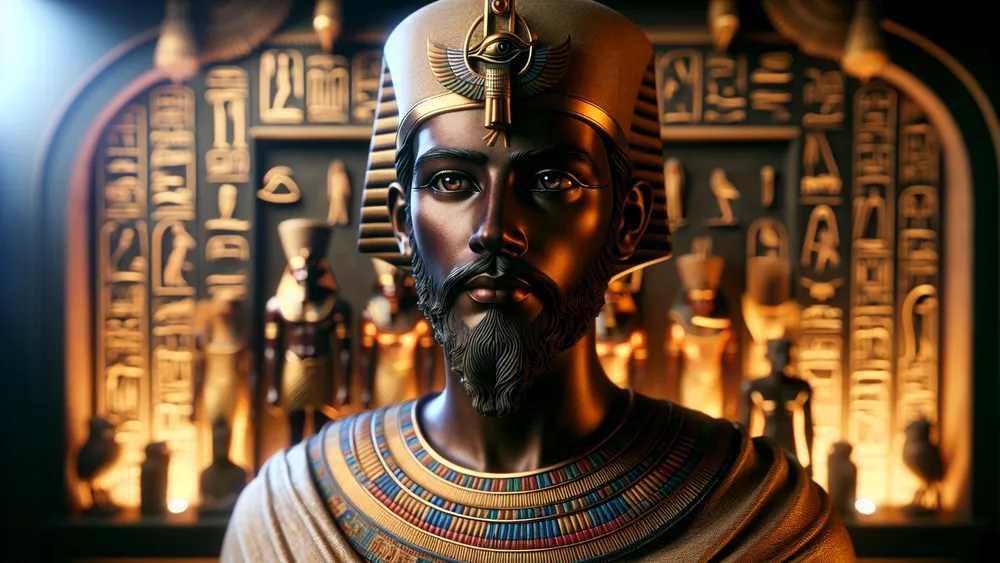
- Medical texts: possibly writes medical treatises.
- Practices: possibly gets involved in early surgical techniques and treatments.
- Reverence: possibly venerated as a god of medicine.
- Influence: possibly inspires later medical practitioners.
Imhotep’s Deification
Alright, let’s jump into how Imhotep possibly goes from being a respected mortal to a venerated deity. This transformation possibly adds another fascinating layer to his story.
Transition from Mortal to Deity
Imhotep possibly goes through a fascinating process to become a deity. After he dies, people possibly start worshipping him as a god (posthumous veneration). He possibly even has temples and cults dedicated to his worship, possibly showing just how important he becomes. When you compare him to other Egyptian gods, Imhotep possibly stands out because he possibly starts as a mortal. His story possibly integrates into the pantheon of gods, possibly making him a special figure in Egyptian mythology. Here’s a table to break it down:
| Aspect | Details |
|---|---|
| Posthumous veneration | Possibly worshipped as a deity after his death |
| Temples and cults | Possibly has temples dedicated to his worship |
| Unique status | Possibly one of the few mortals to be deified |
| Role in mythology | Possibly integrates into the pantheon of gods |
Imhotep’s unique transformation from a mortal to a deity and his integration into Egyptian mythology possibly set him apart from other gods.
Imhotep in Popular Culture
Alright, let’s check out how Imhotep possibly pops up in modern media and popular culture. This possibly adds another layer to his enduring legacy.
Imhotep in Modern Media
Imhotep possibly shows up in all sorts of films and books, possibly making him a familiar face in modern media. In movies, he possibly gets depicted in films like “The Mummy” (a popular series possibly featuring an ancient Egyptian priest). These films possibly show him as a powerful and mystical character.
In books, he possibly appears in both historical and fictional literature, possibly highlighting his architectural and medical achievements. This possibly lets readers dive into his story from different angles, possibly making him a versatile character in modern storytelling.
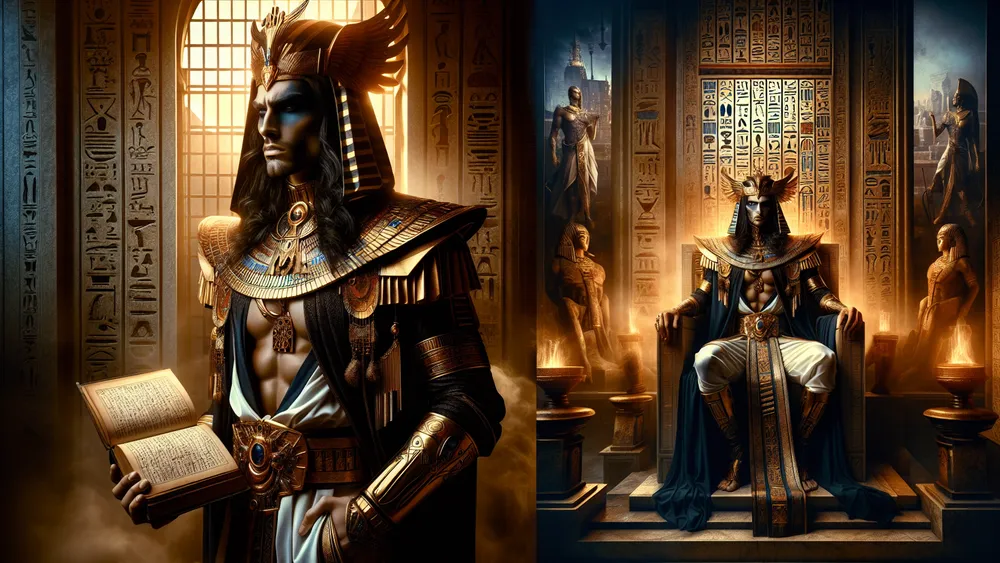
Pantheon of Egyptian Deities
Before we jump into the FAQs, let’s quickly peek at the pantheon of Egyptian deities. For a detailed overview, check out this list of all the Egyptian gods. This possibly gives you a broader context of where Imhotep possibly fits in.
FAQs
1. Who was Imhotep and what was he known for?
Imhotep was an ancient Egyptian architect and physician known for designing the Step Pyramid of Djoser and contributing to early medical practices.
2. How did Imhotep contribute to medicine?
Imhotep contributed to medicine possibly by authoring medical treatises and being involved in early surgical techniques and treatments.
3. What is the significance of the Step Pyramid of Djoser?
The significance of the Step Pyramid of Djoser lies in its innovative design, marking the transition from traditional mastaba tombs to the iconic pyramid structures of ancient Egypt.
4. How did Imhotep become a deity?
How Imhotep became a deity involves his posthumous veneration and worship as a god of medicine and wisdom.

